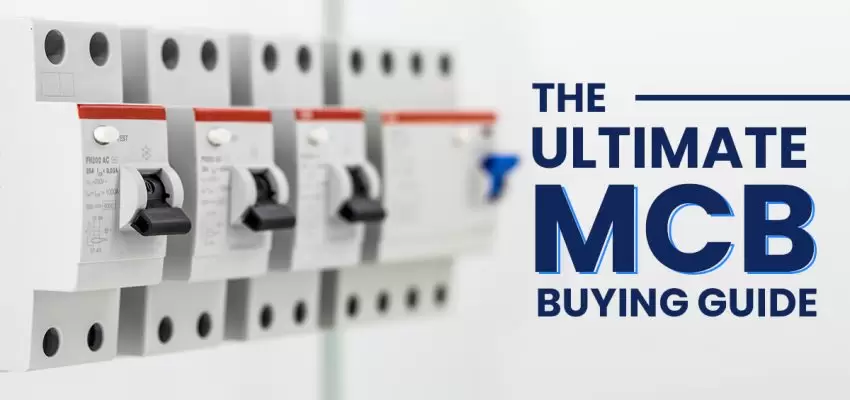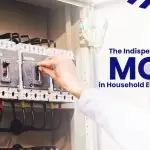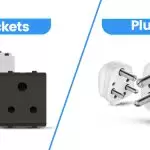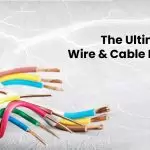Power surges can damage your devices, but Miniature Circuit Breakers (MCBs) prevent this. MCBs are like automatic switches that turn off power when there’s a surge, replacing old fuses that need frequent replacement after short circuits. MCBs are durable and can be easily reset when tripped, keeping your devices safe. Read our comprehensive MCB buying guide to make an informed decision as to which type of MCB suits your needs best.
Post your Requirement
How Does an MCB Operate?
MCBs work by responding to overcurrent situations, which occur when the electrical flow surpasses safe levels. They use a robust mechanical system to minimize false alarms. When excess current flows through, a bimetallic strip within the MCB heats up, bends, and triggers the MCB to trip. This action separates electrical contact points, controlling the electrical discharge or arc. An insulated metal strip called the arc chute divides and cools the arc. Once the issue is fixed, the MCB can be manually reset, allowing the contacts to close again.
MCBs serve dual purposes: they protect against both overloading and short-circuits, using different methods for detection. Overload protection relies on the bimetallic strip’s thermal operation, while short-circuit protection is achieved through the tripping coil’s electromagnetic operation. The MCB (Miniature Circuit Breaker) responds rapidly to high-discharge situations, tripping within a fraction of a second, while it reacts more slowly to overcurrents that are closer to safety limits.
Uses Of MCB
Here are the uses of MCBs explained:
- Electrical Panels: MCBs are crucial components in electrical panels as they facilitate the uniform distribution of power to various devices while also limiting power fluctuations. This, in turn, safeguards equipment by reducing the risk of damage, ensuring a reliable power supply in homes and commercial settings.
- Lighting Systems: MCBs play a vital role in our homes’ lighting systems by ensuring efficient power distribution. They can adapt to the specific power needs of different types of lights, preventing overloads and extending the life of bulbs, contributing to cost savings and safety.
- Industrial Equipment: In industrial environments with power-hungry equipment, MCBs are essential for maintaining a constant and stable power supply. These heavy-duty appliances in places like supermarkets, hotels, and malls benefit from MCBs that protect against electrical disruptions, ensuring uninterrupted operations.
- Ground Fault Trip Mechanism: MCBs are employed to prevent accidents stemming from electrical wires coming into contact with the ground. When such a situation occurs, the MCB acts as a ground fault trip mechanism, swiftly cutting off power to the affected circuit, and averting further damage and potential hazards.
Types Of MCB
Here are the different MCB types explained:
Type B MCBs:
- Trip when the current is 3-5 times the recommended limit.
- Most sensitive, used in homes and low-voltage commercial places.
Type C MCBs:
- Designed for more powerful devices.
- Trip at 5-10 times the recommended limit.
- Common in commercial and industrial setups, like electric motors and lighting.
Type D MCBs:
- The least sensitive type.
- Trip at 10-20 times the recommended limit.
- Used for heavy-duty machines in industrial settings, like welding equipment and X-ray machines.
Other MCB Types:
- Type K MCBs trip at 8-12 times the recommended limit, suitable for motors.
- Z-type MCBs trip very quickly, at just 2-3 times the recommended limit, used for sensitive devices like semiconductors prone to short circuits.
Choosing The Right MCB
When choosing the right MCB, it’s essential to consider specific factors to match your device or installation’s requirements. First, consider the MCB’s “tripping characteristics” to ensure it responds appropriately to current surges. Next, check the “breaking capacity,” which should align with the potential strength of surges in your setup; breaking capacities are measured in kiloamperes (kA), where each kA equals 1,000 amperes (amps). It’s vital to pick the right number of poles or trippable switches within the MCB housing. Options include single, double, triple, and four-pole. Commonly, triple or three-pole models are used, allowing simultaneous interruption of all three circuits if a fault occurs in any one of them. These considerations will help you select the suitable MCB for your specific needs, ensuring safety and efficiency.
Top Brands Selling MCB
Below we have mentioned the top brands selling MCB:
FAQs
Q-1. What is the purpose of an MCB in an electrical circuit?
A-1. An MCB, or Miniature Circuit Breaker, is an essential electrical component that safeguards circuits and devices by interrupting the electrical current in case of overloads or short circuits, preventing damage and ensuring safety.
Q-2. How do I select the right MCB for my electrical installation?
A-2. Selecting the right MCB involves considering factors like the load type, current rating, breaking capacity, tripping characteristics, number of poles, and environmental conditions to match the specific requirements of your electrical installation.
Q-3. Can MCBs be reset after tripping, and how do they differ from fuses?
A-3. Yes, MCBs can be reset after tripping, making them reusable and convenient. Unlike fuses, which need replacement after tripping, MCBs can be manually reset once the issue is resolved, saving time and cost.























Post A Comment